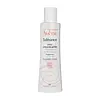What's inside
What's inside
 Key Ingredients
Key Ingredients

No key ingredients
 Benefits
Benefits

 Concerns
Concerns

 Ingredients Side-by-side
Ingredients Side-by-side

Water
Skin ConditioningSodium Laureth Sulfate
CleansingCoco-Betaine
CleansingSodium Lauroyl Sarcosinate
CleansingMannitol
HumectantXylitol
HumectantRhamnose
HumectantFructooligosaccharides
HumectantLaminaria Ochroleuca Extract
Skin ConditioningZinc Gluconate
Skin ConditioningPEG-90 Glyceryl Isostearate
CleansingSodium Chloride
MaskingCoco-Glucoside
CleansingGlyceryl Oleate
EmollientCapryloyl Glycine
CleansingDecylene Glycol
Skin ConditioningCaprylic/Capric Triglyceride
MaskingLaureth-2
CleansingAmmonium Glycyrrhizate
MaskingLysine Azelate
BleachingPyridoxine Hcl
Skin ConditioningUndecyl Alcohol
AntiseborrhoeicCitric Acid
BufferingDisodium EDTA
Sodium Hydroxide
BufferingWater, Sodium Laureth Sulfate, Coco-Betaine, Sodium Lauroyl Sarcosinate, Mannitol, Xylitol, Rhamnose, Fructooligosaccharides, Laminaria Ochroleuca Extract, Zinc Gluconate, PEG-90 Glyceryl Isostearate, Sodium Chloride, Coco-Glucoside, Glyceryl Oleate, Capryloyl Glycine, Decylene Glycol, Caprylic/Capric Triglyceride, Laureth-2, Ammonium Glycyrrhizate, Lysine Azelate, Pyridoxine Hcl, Undecyl Alcohol, Citric Acid, Disodium EDTA, Sodium Hydroxide
 Reviews
Reviews

Ingredients Explained
These ingredients are found in both products.
Ingredients higher up in an ingredient list are typically present in a larger amount.
Coco-Glucoside is a surfactant, or a cleansing ingredient. It is made from glucose and coconut oil.
Surfactants help gather dirt, oil, and other pollutants from your skin to be rinsed away.
This ingredient is considered gentle and non-comedogenic. However, it may still be irritating for some.
Learn more about Coco-GlucosideSodium Hydroxide is also known as lye or caustic soda. It is used to adjust the pH of products; many ingredients require a specific pH to be effective.
In small amounts, sodium hydroxide is considered safe to use. However, large amounts may cause chemical burns due to its high alkaline.
Your skin has a natural pH and acid mantle. This acid mantle helps prevent harmful bacteria from breaking through. The acid mantle also helps keep your skin hydrated.
"Alkaline" refers to a high pH level. A low pH level would be considered acidic.
Learn more about Sodium HydroxideWater. It's the most common cosmetic ingredient of all. You'll usually see it at the top of ingredient lists, meaning that it makes up the largest part of the product.
So why is it so popular? Water most often acts as a solvent - this means that it helps dissolve other ingredients into the formulation.
You'll also recognize water as that liquid we all need to stay alive. If you see this, drink a glass of water. Stay hydrated!
Learn more about Water